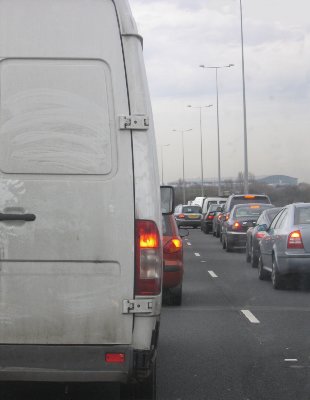From Leigh's piece:
Two years ago I plugged my phone into my car stereo and streamed music through it. The results are here and we found that a normal 128kbps stream consumed around 1MB a minute. Sounds OK doesn’t it? But if you listen to an internet radio station in the same way as an FM radio station – let’s say as background music for a whole working day, the data consumption cranks up quite significantly.
This is a fairly extreme example, but let’s remember that a number of mobile networks offering “unlimited data”. Many have hit the “very small minority” of customers who use a large proportion of the bandwidth. For example, giffgaff have been known to stop people who stream data constantly, as it’s a constant “pull” on the network and the local mast. Streaming is a constant data connection which doesn’t break or stop like a standard download would, so it impacts people who are using the same mast. They’re getting less of a share of that bandwidth.
Perhaps the simplest way to explain it is to imagine a motorway. The motorway is the data pipe serving your local mast. If you request a webpage then a car goes up one side of the motorway and then comes back down the other side with your webpage. It’s quick and leaves the lanes free for others. An audio stream is slightly different. It’s like a line of trucks all sitting in lane one. They’re moving, albeit slowly, and they’re reducing capacity.
...I mentioned Spotify earlier and it’s worth a quick look at this too if you’re using it on your phone. I’ve dug out the details and the Spotify mobile “low bandwidth” option is actually 96kbps, which is 43.2MB every hour or 345.6MB if you leave it running for 8 hours a day. The Spotify mobile “High Quality” setting is actually 160kbps, so you’re looking at 72MB per hour or 576MB over 8 hours. If you switch up to the Spotify mobile “Extreme quality” setting then you’re pulling at 320kbps – that’s 144MB every hour, so you’re not even going to get 4 hours of music on a 512MB data package. Leave that running for 8 hours and it’ll consume 1.12GB.
To be honest, this situation is all a bit crap. Yes, crap. I said it.
This isn’t the way it should be. The internet now isn’t the way it should be either. This “internet” that you’re fed now is heavily controlled, monitored, filtered, managed and limited. We should be able to listen to as much of the music that we want. We should be able to watch all the streaming TV and video that we want, but the plain fact is that if we all start doing that, it’ll give the networks yet more problems, and they’ll either have to build bigger and better (as some have) or start twiddling knobs here and there to box us into the shape they want.
My emphasis, obviously. Now, long term, network capacity will improve by another order of magnitude and maybe streaming TV for all will be quite possible in 2020. But there are problems today, in 2013.
I have a friend who, partly as a test, consumed 140GB of data in a month on his 3.5G set-up on his phone. Yes, very cool from a geek point of view, and insanely good value given that he was on an all-you-can-eat plan. But if even 1% of normal users started doing that then no one would get very far, at least with current network capacity.
Online music streaming is fun and cool and, of course, trendy. But, at least in 2013, I'd advise a mixed connectity set-up, with some locally stored music (all your favourites) on mass memory or memory card, with as much online media as you can cached (where possible) and with online music download settings set to 'low' (after all, if you're mobile then you probably won't be able to hear the difference between the various encoding bitrates).
Comments? How does your own music/video consumption on your phone play out? What fraction is local and what fraction is streamed?

